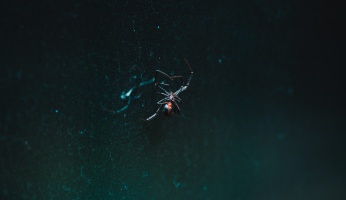Everything You Should Know About Having a Pet Llama
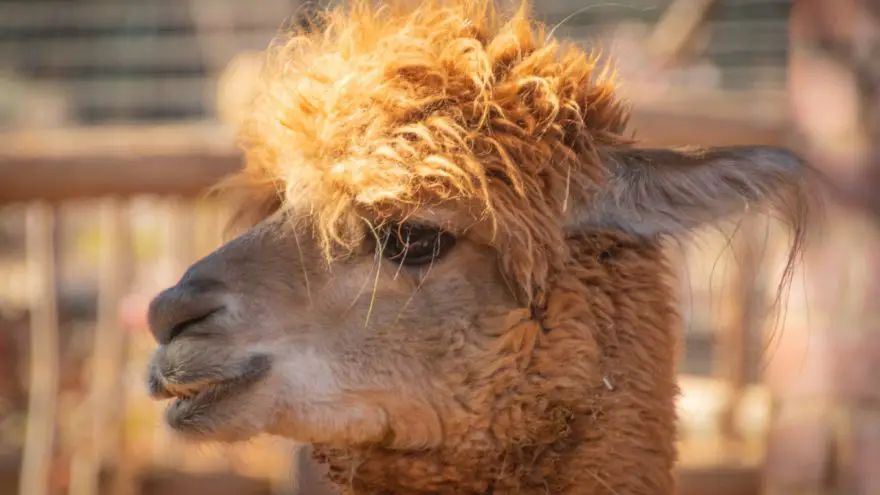 Everything You Should Know About Having a Pet Llama
thegearhunt.com
Everything You Should Know About Having a Pet Llama
thegearhunt.com
The popularity of having a llama as a pet is growing because they have a friendly disposition, are very clean, and are mild mannered.
 First and foremost, llamas are companions and pets. They are ideal for this due to them having a low key and predictable temperament. They are also easy to maintain and intelligent. Generally, llamas are thriving, healthy animals that don’t require a lot of maintenance aside from typical basic care. That being said, before you make the decision to get one for a pet, you should have a good basic understanding of both the animal and its needs.
First and foremost, llamas are companions and pets. They are ideal for this due to them having a low key and predictable temperament. They are also easy to maintain and intelligent. Generally, llamas are thriving, healthy animals that don’t require a lot of maintenance aside from typical basic care. That being said, before you make the decision to get one for a pet, you should have a good basic understanding of both the animal and its needs.
You should figure out if you have the right accommodation and type of property to fit the llama’s needs. They need quite a bit of room to graze and run, as well as a shelter that they can avoid extreme weather in. Also, your property will need to have the proper zoning for livestock.
Think about whether or not you will be able to keep more than just a single llama. Llamas are social creatures and they will need to have at least one other one to keep them company if you want them to be able to thrive.
Find a reliable source of supplies for your llama. They will need grooming tools and food. Llamas need a specific diet if you want them to be healthy, and trimming their toenails, shearing their wool, and typical grooming will all be relevant to the health of the animal.
You will also need to find a vet who is familiar with this specific animal. When it comes to things like health certifications, blood tests, de-worming, and vaccinations, llamas need to be kept on a tight schedule. Qualified vets will have the ability to show you exactly how you will need to keep their health records, and this is critical for those who wish to own one.
When it comes to purchasing a llama, you might want to locate a breeder who is reputable. One great way to do this is to get in touch with the ALSA, or Alpaca and Llama Show Association, because they will be able to recommend any breeders who might be in the area near you. You might also want to attend any ALSA competitions and/or shows because this can also be a good way to meet a variety of breeders and determine if they have any for sale.
Appearance
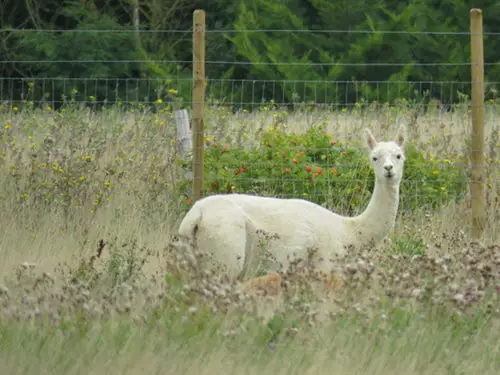 A fully-grown llama can be anywhere from 40 – 50 inches tall at their withers and as tall as 72 inches at their poll. When they are born, they can weigh as much as 31 pounds and when fully grown, they can weigh as much as 300 pounds. Female llamas tend to reach their mature size at 2 years old and males at 3 years old. The life expectancy for a llama who is healthy is about 25 years. The llama has a graceful, long neck topped with a head that is relatively small. They have curvy, long ears and large eyes.
A fully-grown llama can be anywhere from 40 – 50 inches tall at their withers and as tall as 72 inches at their poll. When they are born, they can weigh as much as 31 pounds and when fully grown, they can weigh as much as 300 pounds. Female llamas tend to reach their mature size at 2 years old and males at 3 years old. The life expectancy for a llama who is healthy is about 25 years. The llama has a graceful, long neck topped with a head that is relatively small. They have curvy, long ears and large eyes.
Llamas are covered by wool that can be as long as 8 inches, and they come in a variety of colors. Wool covers their sides, back, and neck, but their legs, underside, and head are covered with short hairs. Their thick covering of wool means that they are able to withstand rain, snow, wind, and cold. The short hair that is elsewhere on their bodies allows them to dissipate the heat when they are in environments that are warm. Llama wool isn’t exactly like the wool from sheep. It doesn’t feature the lanolin that makes the wool from a sheep waterproof. Llamas also feature a tail that can be a foot long when they are mature. They also have flanks that are high-cut and are accented by an abdomen that hangs loosely and a carriage that is just a bit forward-leaning.
Behavior
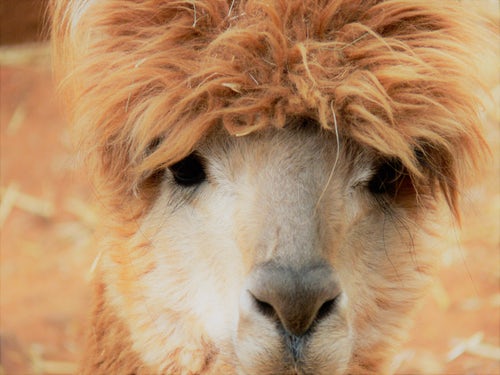 Llamas are quite friendly, well-socialized and can be a joy to be around. Extremely curious, most of them will approach people quite easily. That being said, llamas who have been bottle fed, over-handled, or over socialized when they are young can grow to be quite difficult to be handled as adults. This is due to the fact that they will start to treat people as if they were also llamas, and this is characterized by incidents of neck wrestling, kicking, and spitting. Anyone who bottle feeds a llama (or cria, baby llama) needs to keep any contact at a minimum and cease the action as soon as you can.
Llamas are quite friendly, well-socialized and can be a joy to be around. Extremely curious, most of them will approach people quite easily. That being said, llamas who have been bottle fed, over-handled, or over socialized when they are young can grow to be quite difficult to be handled as adults. This is due to the fact that they will start to treat people as if they were also llamas, and this is characterized by incidents of neck wrestling, kicking, and spitting. Anyone who bottle feeds a llama (or cria, baby llama) needs to keep any contact at a minimum and cease the action as soon as you can.
When they are raised right, it can be rare for a llama to spit at a person. They are herd animals that are incredibly social though, and they will spit at each other as a method of disciplining llamas in the herd who have lower ranks. The social rank of a llama in a herd is never constant. They are always moving up or down the chain when they pick small fights. Typically, this will be done by the males as a way to determine dominance. When they do fight, it is visually dramatic. They will spit, ram other llamas with their chests, wrestle with their necks, and kick, mainly to knock their opponent off balance. When females spit, it is typically just a way for them to control other members of the herd.
Even though the social structure within a herd is constantly changing, they all live as a family unit and will take care of any member of the herd. If one of them hears a strange noise or feel as if they are being threatened, a warning bray will be sent out and the rest of the herd will be put on alert. Also, they frequently hum to other llamas as a way to communicate.
If you ever hear a llama going ‘mwa’ or making noises that sound like groans, typically, this is a sign of either anger or fear. When they are agitated, they will lay their ears back. You can often determine just how agitated they are by what is found in the spit – if you care to examine it. The more irritated a llama is, the farther back into its 3 compartments of the stomach it will reach for what it puts into its spit.
The ‘orgle’ is the mating sound that an alpaca or llama will make. Typically, it will be by a sexually aroused grown male. The sound will be akin to gargling, but will have more of a forceful, buzzing to it. Males will begin to make this sound when they get aroused all the way until they finish with the sexual action. This can be as little as 15 minutes to as long as an hour.
Feeding
The care and feeding of a llama are really quite simple. Llamas, by nature, are quite hardy and their options for feeding are seemingly unlimited. They can thrive on quite a few natural grasses, along with some fresh water and not much more than that. They are easy to feed when compared with the more frequently seen types of livestock. When it comes to feeding, here are a few tips.
Provide a fresh clean supply of hay for them. This is unless you will be keeping them in a pasture where they will have unlimited access to quite a lot of grasses. Try not to feed them seeds and grains unless it is a female who is either lactating or pregnant. Llamas tend to eat about 12 pounds of hay on a daily basis, or as much as 4% of their total body weight.
Ensure that the animals have access to plenty of fresh water each day. They might not drink as much as other species of livestock, but if you want them at peak health, they will need an unlimited supply.
Try not to feed your llama too much. Llamas are just one of quite a few animals that will gorge themselves if the food is there for them to do so.
Supplement the diet of your llama with a mineral or salt block. Look for pelleted or free choice mineral supplements instead of larger blocks. This is because a llama doesn’t have the ability to lick. These mineral blocks should contain salt, phosphorus, calcium, and selenium.
Add corn to the diet of your llama, especially during the colder months. This will assist them with maintaining their energy levels when the weather is colder.
Grooming
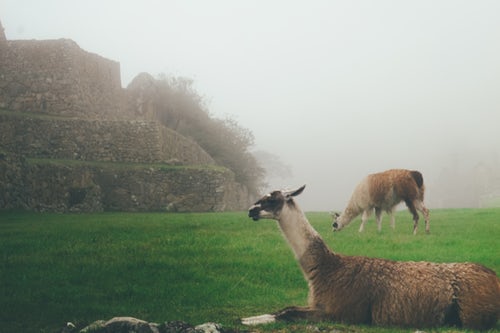 This might seem to be a bit silly, but you need to make sure that your llama is healthy. What does that have to do with grooming? Well, there isn’t any amount of grooming that can be done that will make them shine if they aren’t healthy. Feed your animal a diet that is nutritious and make sure that they have good care. Grooming from the inside like this will do much to make them look good on the outside. The grooming of a llama is quite critical, and it can also be a fantastic opportunity for you and the animal to bond. Here are a few grooming tips.
This might seem to be a bit silly, but you need to make sure that your llama is healthy. What does that have to do with grooming? Well, there isn’t any amount of grooming that can be done that will make them shine if they aren’t healthy. Feed your animal a diet that is nutritious and make sure that they have good care. Grooming from the inside like this will do much to make them look good on the outside. The grooming of a llama is quite critical, and it can also be a fantastic opportunity for you and the animal to bond. Here are a few grooming tips.
Treat the animal with compassion and love. These creatures are magnificent and will reward you by extending their love to you. They will also be more likely to cooperate when the time comes to groom them. If the act of grooming seems to be stressing them, give them a few breaks to calm down.
Pay close attention to the fiber that is on your llama. If it is suri fiber, you won’t want to use any sort of brush that will disturb it. If the fiber is silkier though, you have a few more options when it comes to brushing them.
If there is large debris in the fur on your llama, pull it out. Depending on what it is, you might use your hands, a wand, or a pick to accomplish the task.
Give your animal a good blowout. Just get a blower and blow only the surface of their fur right in the direction that the fibers grow in order to remove any smaller debris along with dust and dirt. Once their fur is clean to your eye, you might want to add a professional sort of grooming product and blow the animal down again.
Be ready to bathe. Llamas that feature suri fiber fur need to have each lock of fur separated one at a time. This can take a long time. If the fur gets matted, you will need to spend a significant amount of time getting it straight. Think about spreading the process over a few days. For any other type of fur, you can thoroughly brush the animal.
Bathe your pet. Use a shampoo that is high-quality and follow this up with a good conditioner. Make sure the products are right for the type of fur the animal has.
Your llama needs to be hand groomed. Squeeze out excess water and then straighten the llama’s fur or locks with either a good grooming tool or your hands. Let him dry, and make sure that they are somewhere where they won’t be able to get dirty again while they are still wet. You might want to think about getting them a leave-in treatment for their fur. If you want to make sure that their coat remains shiny and soft, leave-in treatments or conditioners are great for this. If you truly want them to shine, you can finish them off with a grooming ointment to their face or with a finishing spray.
Health
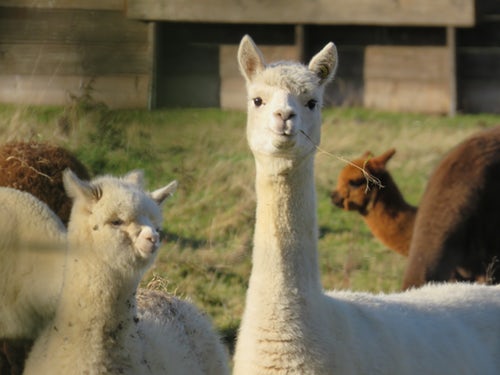 Llamas can be very hardy, but that doesn’t mean that they aren’t susceptible to the same parasites and diseases as sheep and cattle. One of the most notable diseases that can plague them is overeating disease, or enterotoxaemia Types C and D. This is a disease that mostly affects crias. Vets have reported success when it comes to decreasing the occurrences of this disease by immunizing the female and then the young at about 5 weeks of age. Llamas are also susceptible to tuberculosis, tetanus, malignant edema, anthrax, and John’s disease.
Llamas can be very hardy, but that doesn’t mean that they aren’t susceptible to the same parasites and diseases as sheep and cattle. One of the most notable diseases that can plague them is overeating disease, or enterotoxaemia Types C and D. This is a disease that mostly affects crias. Vets have reported success when it comes to decreasing the occurrences of this disease by immunizing the female and then the young at about 5 weeks of age. Llamas are also susceptible to tuberculosis, tetanus, malignant edema, anthrax, and John’s disease.
As far as parasites go, llamas can be infected with both external and internal types. The internal types include flukes, tapeworms, meningeal worms, lungworms, and gastrointestinal nematodes. Medicine that is already in use to treat sheep and cattle for these can also be used for llamas. External parasite such as lice, mites, and ticks can all be treated by using pesticides that have been approved for use on cows.
Ok. That is what you need to know in order to make a decision as to whether or not you want to purchase a llama as a pet. They are a commitment, so ensure that you are able to make that commitment before you purchase one.
Sources
- You Tube, 5 Weird Llama Facts
- World Market, 6 Things You Need to Know About Llamas
- Good Housekeeping, 6 Things You Should Know Before Getting a Pet Llama or Alpaca
- Gala Online, What You Need to Know About Owning a Llama






